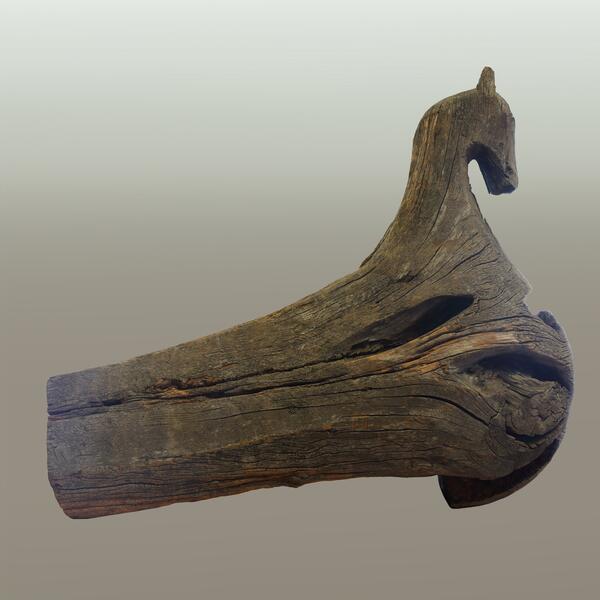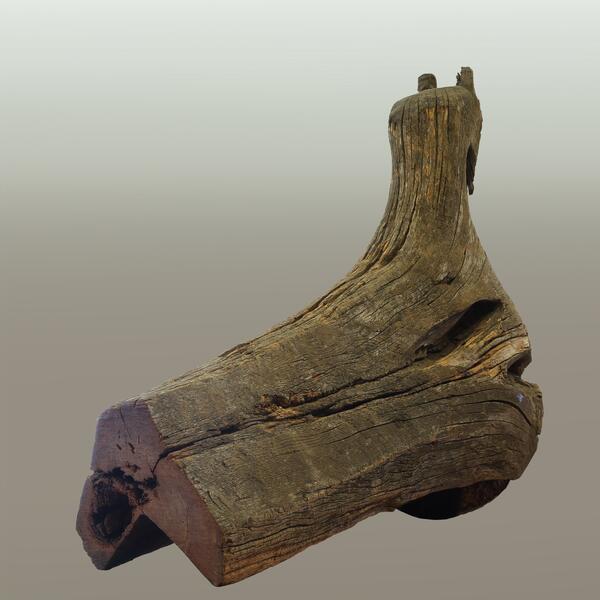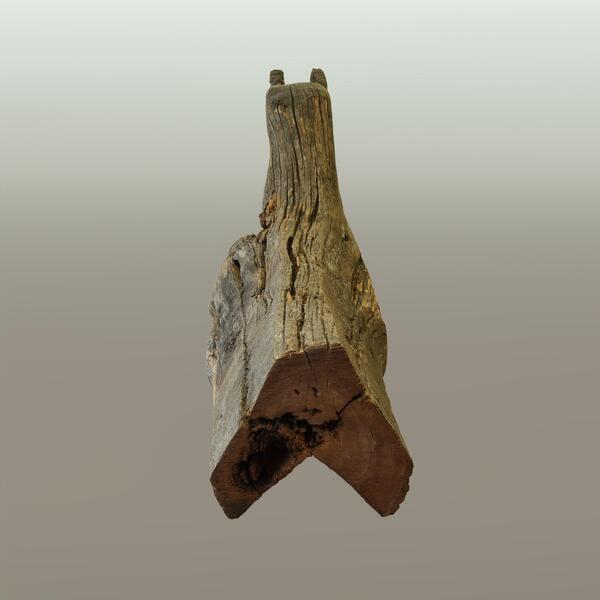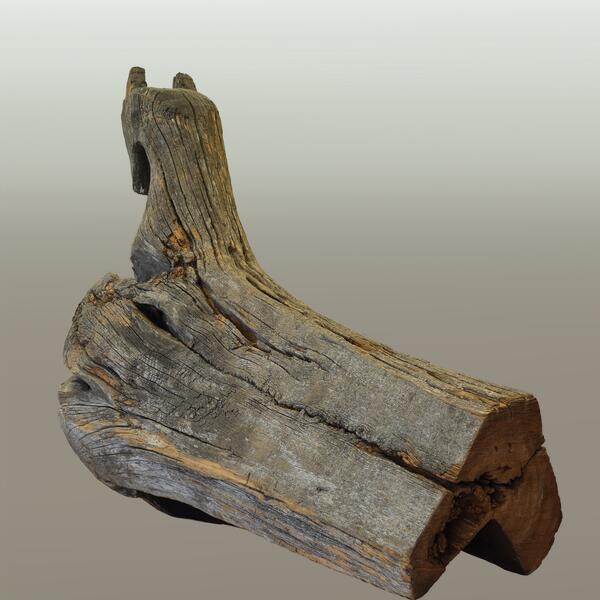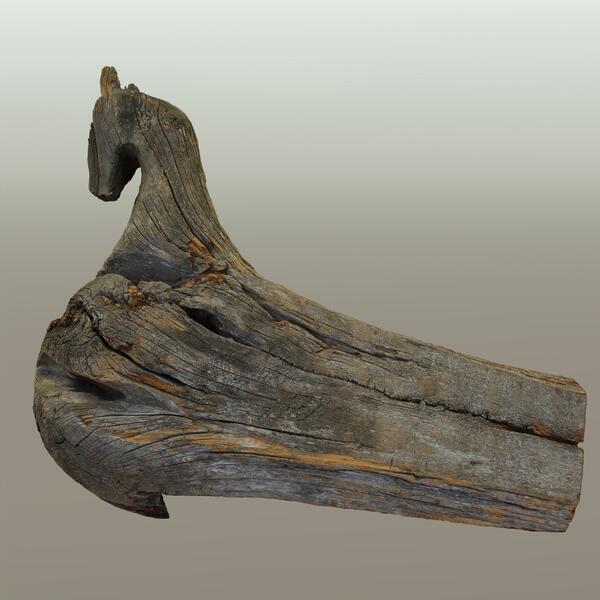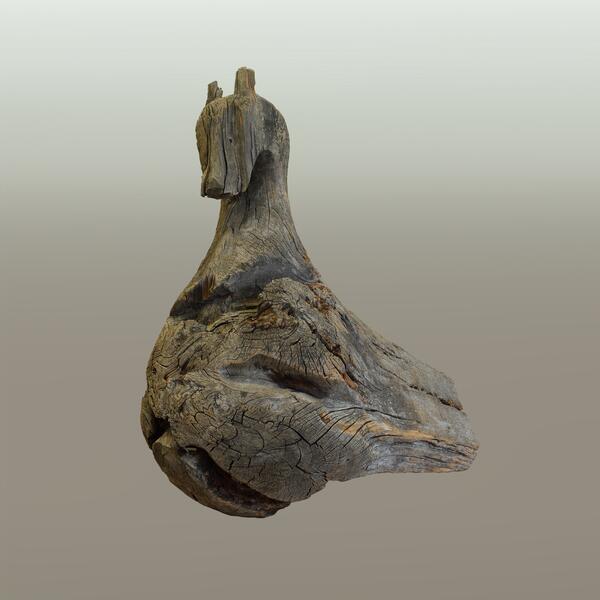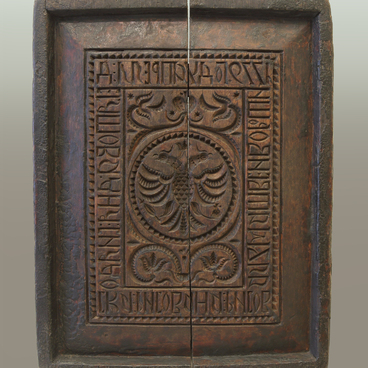This okhlupen entered the collection of the Russian Museum in 1966 after an expedition of the folk art department to Arkhangelsk Oblast. It was removed from a dilapidated crumbling house, built in 1853 in the village of Kokuy (now the village of Kovernikovskoye, Vinogradovsky municipal district of Arkhangelsk Oblast). The house used to belong to Ivan Shikhov and his family. The story of how this unique six-hundred-kilogram monument was brought from a distant village on the Northern Dvina to Leningrad by the members of the expedition has become a legend of its own.
In the villages of the Russian North, a special log on the roof was called an okhlupen. It had a V-shaped groove cut into its lower edge and, when placed on top of the roof, fixed the whole construction. The ends of the roof boards entered the groove called a “hlupen”.
Russian carpenters often used an axe to carve sculptures a symbolic image of a horse from the root ball. Usually one log with a horse faced the street, and the other strengthened the roof from the opposite side. The installation of this log made from the most durable types of wood — spruce or larch — completed the construction of the house. And the horse sculpture on the ridge on the roof towered over the pediment and completed the composition of the facade.
An okhlupen was added not only for practical and aesthetic purposes. It also had a symbolic meaning, dating back to ancient times. The horse was a peasant’s invaluable helper and a warrior’s faithful companion. It was one of the favorite ancient images in Russian folk art: its image is found on carved and painted objects of peasant life (for example, on distaffs), on ancient wooden utensils, in embroidery, metal (a knife for cabbage) and folk toys.
The okhlupen on Shikhov’s house has a small head on a short neck, sharp ears and a powerful arched chest. It is a true work of folk art — a monumental and unique wooden sculpture created by a talented unknown northern craftsman. The collection of folk art of the Russian Museum contains several okhlupens, and, although they share some traditional features, each of the exhibits is unique.
In the villages of the Russian North, a special log on the roof was called an okhlupen. It had a V-shaped groove cut into its lower edge and, when placed on top of the roof, fixed the whole construction. The ends of the roof boards entered the groove called a “hlupen”.
Russian carpenters often used an axe to carve sculptures a symbolic image of a horse from the root ball. Usually one log with a horse faced the street, and the other strengthened the roof from the opposite side. The installation of this log made from the most durable types of wood — spruce or larch — completed the construction of the house. And the horse sculpture on the ridge on the roof towered over the pediment and completed the composition of the facade.
An okhlupen was added not only for practical and aesthetic purposes. It also had a symbolic meaning, dating back to ancient times. The horse was a peasant’s invaluable helper and a warrior’s faithful companion. It was one of the favorite ancient images in Russian folk art: its image is found on carved and painted objects of peasant life (for example, on distaffs), on ancient wooden utensils, in embroidery, metal (a knife for cabbage) and folk toys.
The okhlupen on Shikhov’s house has a small head on a short neck, sharp ears and a powerful arched chest. It is a true work of folk art — a monumental and unique wooden sculpture created by a talented unknown northern craftsman. The collection of folk art of the Russian Museum contains several okhlupens, and, although they share some traditional features, each of the exhibits is unique.


